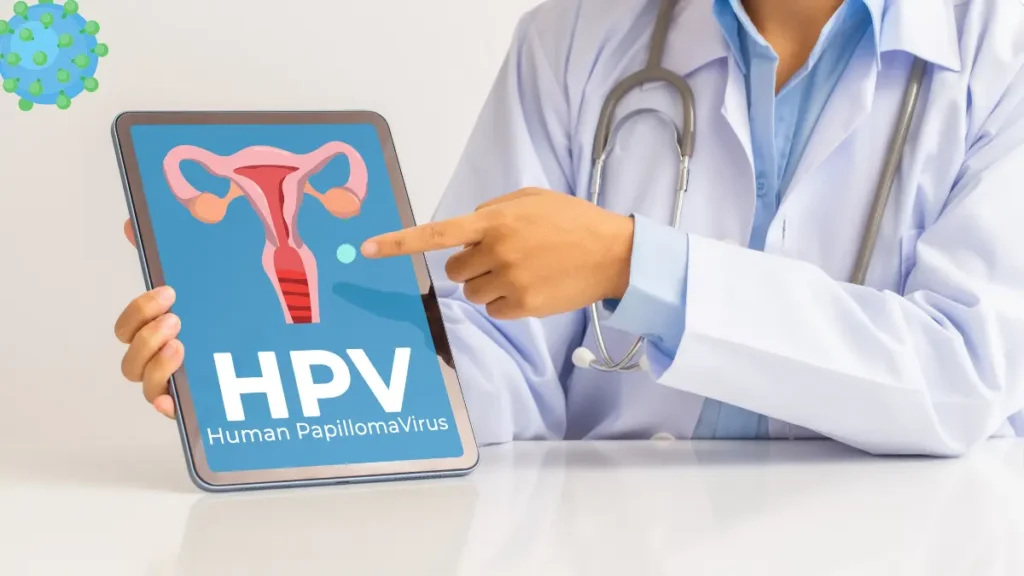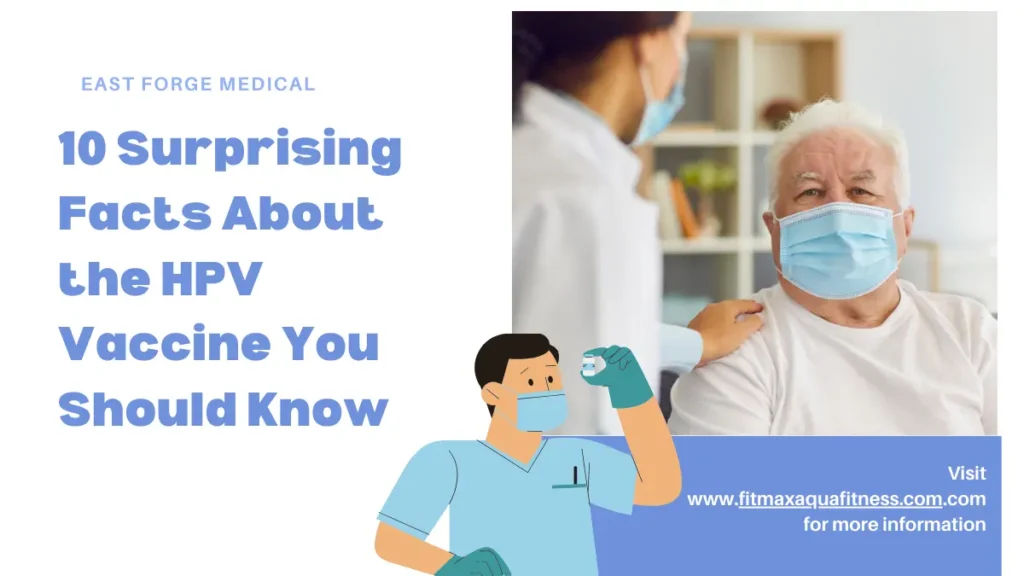
Table of Contents
ToggleThe Widespread Issue of HPV
Human Papillomavirus Infection
Human Papillomavirus (HPV) is a viral infection affecting millions worldwide. It can cause health complications, including cancer, and is transmitted through sexual contact.
Some types of HPV can lead to visible symptoms such as genital warts, but often the virus does not cause any immediate symptoms. Regular check-ups and screenings are important because HPV is usually asymptomatic.
Preventing HPV is possible through vaccination, safe sex, and limiting sexual partners. There is no cure for HPV, but treatments are available for related health issues such as genital warts and abnormal changes in cervical cells.
Even though a diagnosis of HPV can be overwhelming, it is manageable through follow-up appointments, communication with partners, stress management, and seeking support. Understanding HPV and its prevention strategies empowers individuals to take control of their sexual health and reduce its impact.
Key Takeaway:
HPV is an extremely common viral infection that can lead to serious health complications, including cancer. While it’s widespread, it’s also largely preventable through vaccination and safe sexual practices. Regular screenings and early detection are crucial in managing HPV-related health risks.
Symptoms: The Invisible Invader
One of the most challenging aspects of HPV is that it often doesn’t present any noticeable symptoms, especially in its early stages. This “silent” nature contributes to its widespread transmission. However, when symptoms do occur, they can vary depending on the type of HPV involved. Here are some common symptoms to be aware of:
- Genital warts (cauliflower-like bumps)
- Warts on other parts of the body
- Abnormal cervical cell changes (detected through Pap smears)
- Persistent throat irritation or sore throat
- Unexplained bleeding or pain
- Changes in skin color or texture in genital areas
- Itching or discomfort in genital areas
- Difficulty swallowing (in cases of throat HPV)
It’s important to note that the absence of symptoms doesn’t mean absence of infection. Many people with HPV never develop visible signs, which is why regular check-ups and screenings are crucial.
Causes: Understanding Transmission and Risk Factors
HPV is primarily transmitted through intimate skin-to-skin contact, most commonly during sexual activity. This includes vaginal, anal, and oral sex. However, it’s important to understand that HPV can be transmitted even without full penetration or ejaculation. Even skin-to-skin contact in the genital area can potentially spread the virus.
Several factors can increase the risk of contracting HPV:
- Multiple sexual partners
- Early sexual debut
- Weakened immune system
- Skin cuts or abrasions
- Unprotected sexual activity
- Smoking (which can weaken the immune system)
- Age (younger people are more susceptible)
- History of other STIs
It’s a common misconception that HPV only affects women. In reality, anyone who is sexually active can contract and spread HPV, regardless of gender or sexual orientation. This underscores the importance of universal awareness and prevention strategies.
Diagnosis: Detecting the Hidden Virus
Diagnosing HPV can be challenging due to its often asymptomatic nature. However, there are several methods healthcare providers use to detect HPV infection and related health issues:
- Pap Smear: This test is primarily used to detect abnormal cell changes in the cervix that might be caused by HPV. It’s recommended for women starting at age 21.
- HPV DNA Test: This test specifically looks for the presence of high-risk HPV types in cervical cells. It’s often done alongside a Pap smear for women over 30.
- Visual Examination: For visible symptoms like genital warts, a healthcare provider can often diagnose HPV through a physical examination.
- Colposcopy: If a Pap smear shows abnormal results, this procedure allows for a closer examination of the cervix.
- Biopsy: In some cases, a small tissue sample may be taken for further examination, especially if cancer is suspected.
It’s worth noting that there is no approved HPV test for men. For individuals with a penis, diagnosis is typically based on visual inspection and symptom assessment.
Treatment: Managing HPV and Its Effects
There is no cure for HPV itself, as it’s a viral infection that often clears on its own. However, treatments are available for the health problems that HPV can cause:
- Genital Warts: These can be treated with topical medications, cryotherapy (freezing), or surgical removal.
- Precancerous Lesions: If abnormal cell changes are detected, they can be treated with procedures like LEEP (Loop Electrosurgical Excision Procedure) or cryotherapy.
- HPV-Related Cancers: Treatment depends on the type and stage of cancer but may include surgery, radiation therapy, and chemotherapy.
It’s crucial to remember that while these treatments address the effects of HPV, they don’t eliminate the virus from the body. Regular follow-ups and screenings are essential to monitor for any recurring issues.
Prevention: Your Shield Against HPV
Preventing HPV infection is key to reducing its impact on health. Here are some effective strategies:
- HPV Vaccination: This is the most effective way to prevent HPV infection. The vaccine is recommended for both males and females, ideally before they become sexually active.
- Safe Sex Practices: Using condoms and dental dams can reduce (but not eliminate) the risk of HPV transmission.
- Regular Screenings: For women, regular Pap smears and HPV tests can detect early signs of cervical abnormalities.
- Limiting Sexual Partners: Fewer partners means less exposure to potential HPV infection.
- Quit Smoking: Smoking can increase the risk of HPV-related cancers.
- Maintain a Healthy Immune System: A strong immune system can help your body clear HPV infections more effectively.
Also read –Conquering the Common Cold: 7 Home Remedies for Relief
Living with HPV: Navigating Life Post-Diagnosis
Receiving an HPV diagnosis can be overwhelming, but it’s important to remember that it’s a common infection that many people experience. Here are some tips for managing life with HPV:
- Stay Informed: Educate yourself about HPV and stay up-to-date with the latest research and treatment options.
- Follow-Up Care: Attend all recommended follow-up appointments and screenings.
- Communicate with Partners: Have open and honest discussions with sexual partners about HPV.
- Manage Stress: Stress can weaken the immune system, so find healthy ways to relax and cope.
- Boost Your Immune System: Eat a balanced diet, exercise regularly, and get enough sleep to support your body’s natural defenses.
- Seek Support: Don’t hesitate to reach out to support groups or counseling services if you’re struggling emotionally.
Remember, having HPV doesn’t define you. With proper care and management, most people with HPV lead normal, healthy lives.
HPV Vaccine:10 Surprising Facts Do You Know?
Conclusion: Empowerment Through Knowledge
Human Papillomavirus infection is a complex and widespread health issue, but it’s one that we have the tools to manage and prevent. By understanding HPV, its risks, and prevention strategies, we can take control of our sexual health and reduce the impact of this virus on our lives and communities.
Whether you’re looking to protect yourself from HPV, managing a recent diagnosis, or supporting a loved one, remember that knowledge is power. Regular check-ups, open communication with healthcare providers and partners, and adherence to prevention strategies are key to navigating the world of HPV.
As we continue to advance in medical research and public health strategies, the future looks promising for HPV prevention and treatment. Until then, stay informed, stay proactive, and remember that you’re not alone in this journey.
Have you taken steps to protect yourself against HPV? If not, why not start today by scheduling a check-up or discussing vaccination with your healthcare provider?
Additional Resources
- Centers for Disease Control and Prevention – HPV
- World Health Organization – HPV and Cervical Cancer
- National Cancer Institute – Cervical Cancer Prevention
- Planned Parenthood – HPV
Sources: Centers for Disease Control and Prevention, World Health Organization, National Cancer Institute, American Cancer Society




